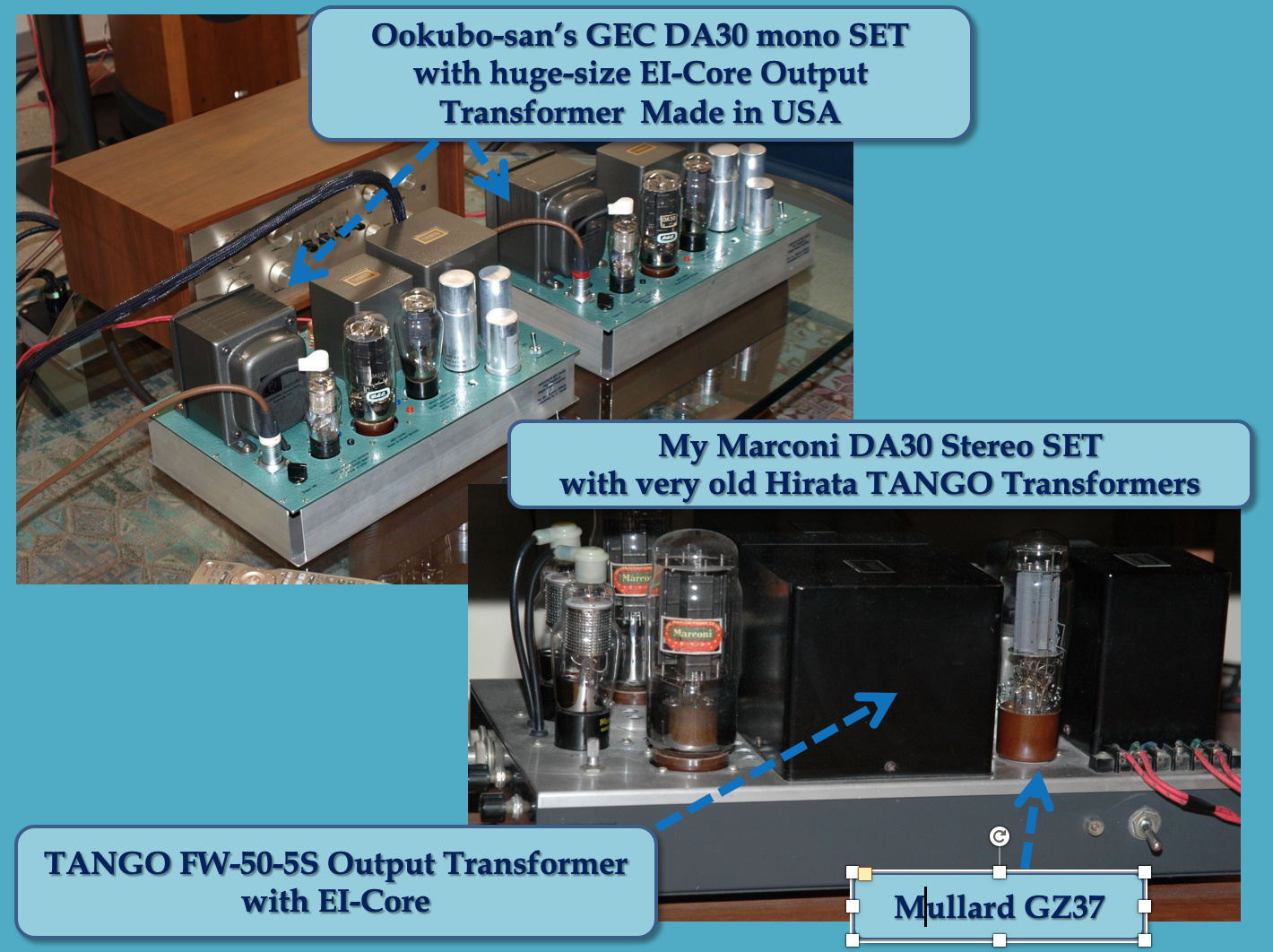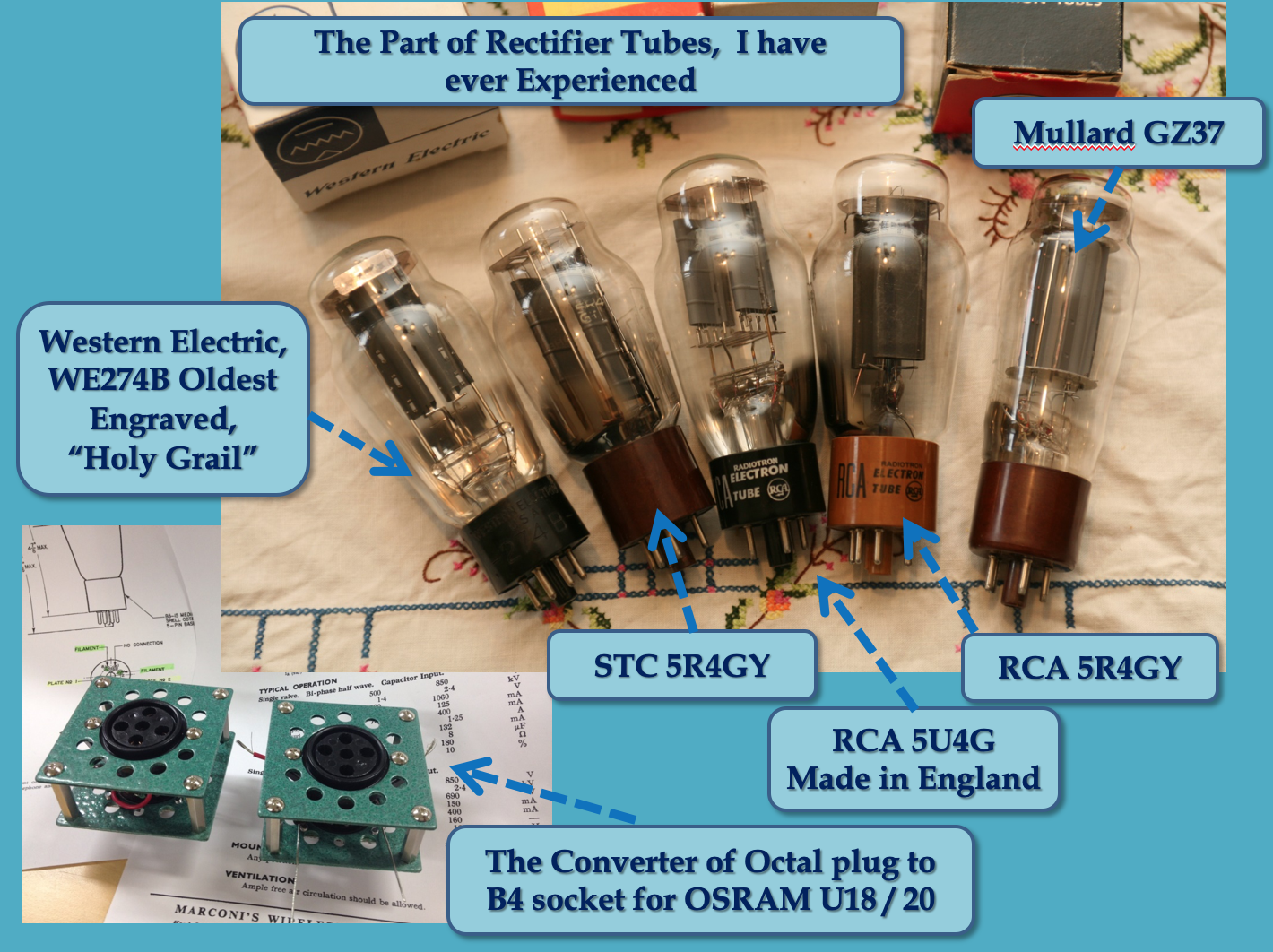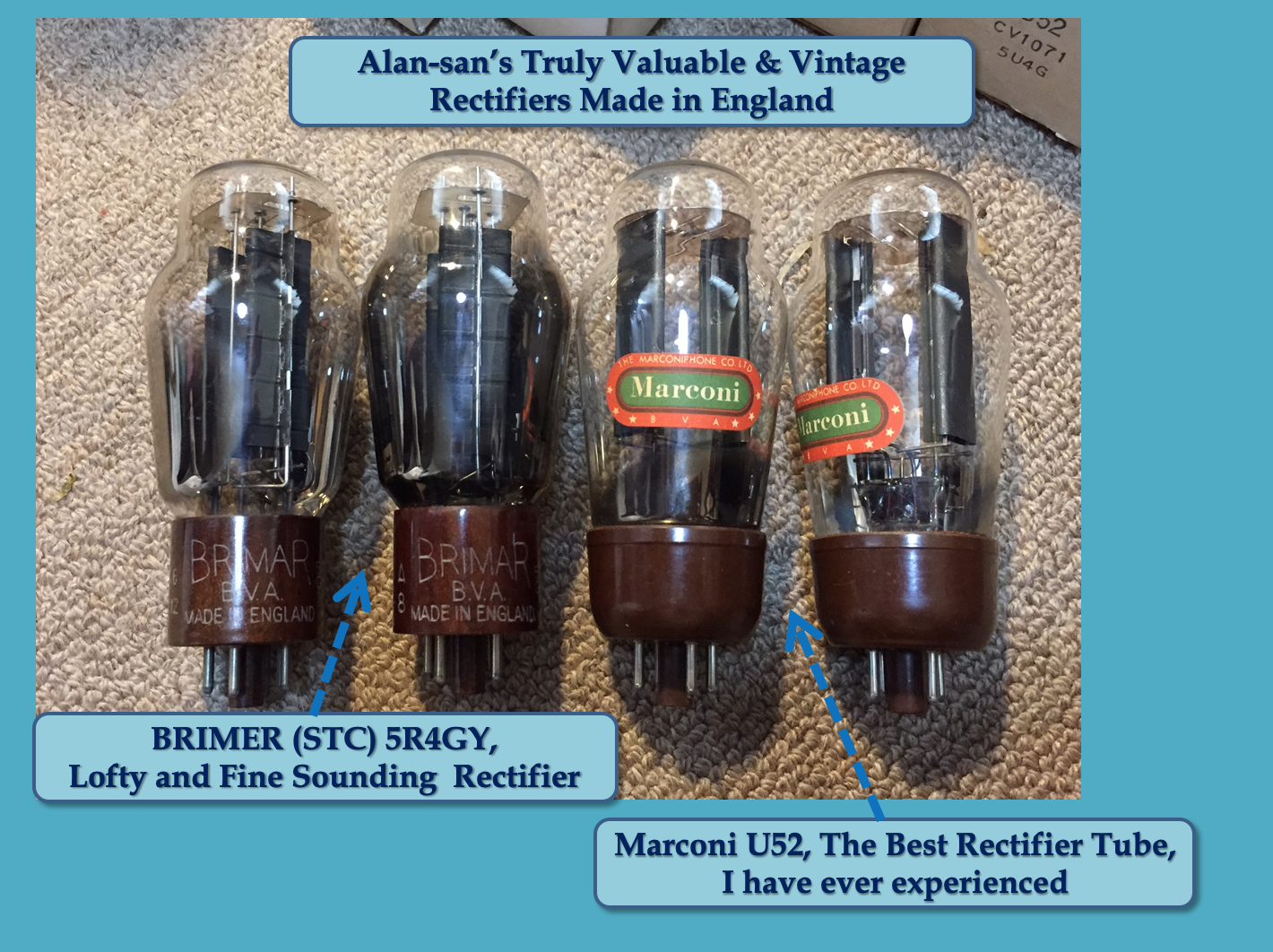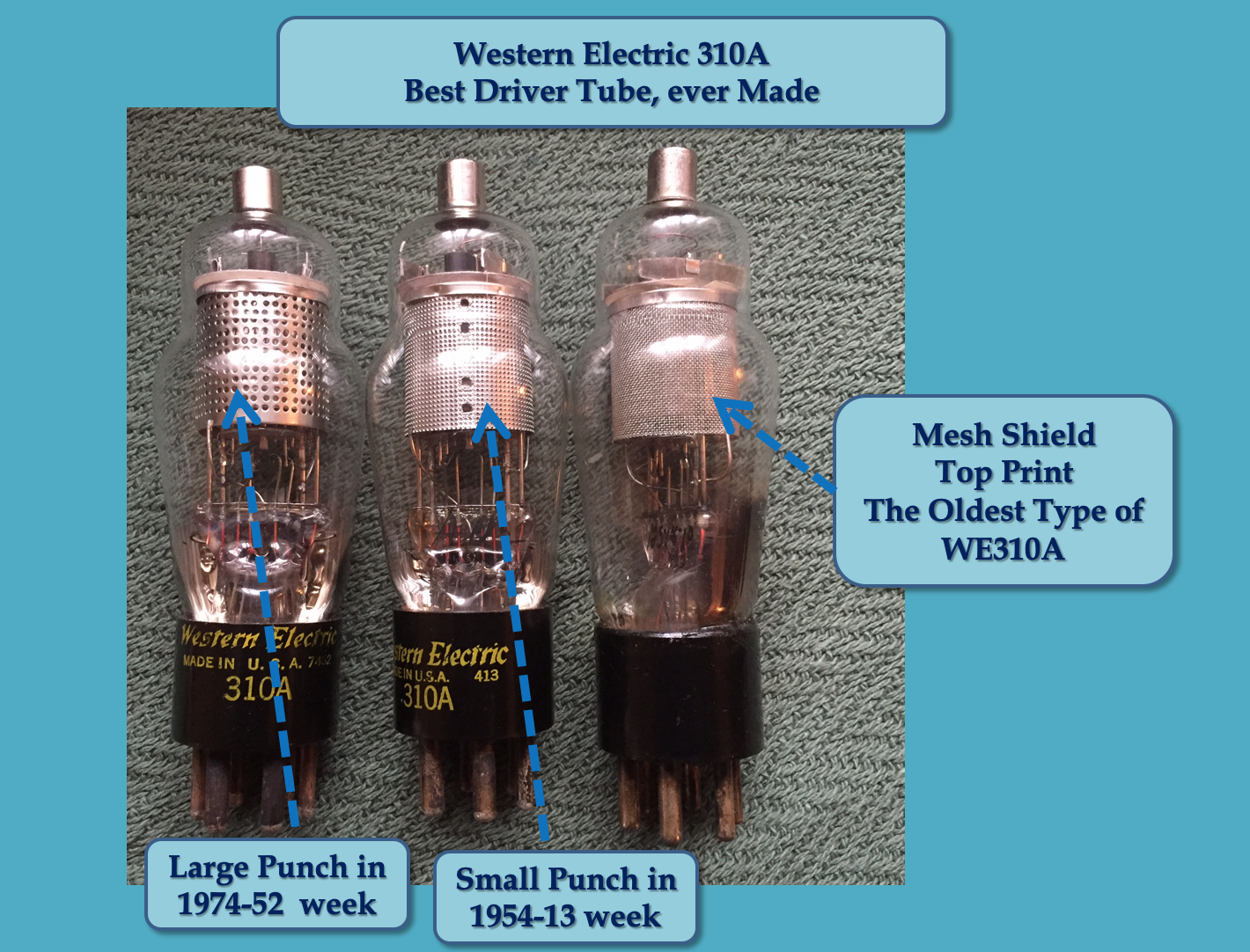With pleasure I offer Yazaki-san's Alan-san’s GEC PX25A Monaural SET's Part 2 for your reading enjoyment!
A huge thank you to Yazaki-san and Alan-san for sharing their Adventures In Real Sound with us!
¸¸.•*¨*•♫♪¸¸.•*¨*•♫♪¸¸.•*¨*•♫♪
About “Anzai-san’s” GEC PX25A single-ended tube amplifier, I expressed it in my last article that I was strongly impressed with its very beautiful circuit with simplest design. It comes exactly from the textbook of tube amplifier design, on how to use a pentode tube.
In such a simple circuit, the goodness of material or the quality of parts one by one, output transformer, rectifier tube, driver tube, and of course capacitor or resistor, reflects or decides the sound quality.
In short, it can be said for a matter of course that any attempt at improving the characteristic with negative feedback technology is ineffective for the non-feedback SET design by Anzai-san.
One must taste the freshness and goodness of the material as it is, just as is true of traditional Japanese cuisine, I have felt.
Well, I’d like to share my very personal experiences about output transformer, rectifier tube and driver tube, WE310A in this article.
An 5K Ohm Primary Impedance Output Transformer for a Single-ended Amplifier
In the early 1970’s in Japan, we first saw the full-fledged transformers with big size cores for single ended amplifiers as a standard product to be listed in the catalogs, and it was exactly the same time as when Jean Hiraga-san started importing business of dealing with mainly European tubes.
It would also be true that that era was just the opening of the first vacuum tube boom in Japan. At the time, the appearance of the FW-50 series of Tango output transformer for both push-pull and single-ended amplifiers, were greeted with applause from mainly amateur tube enthusiasts not only for its high quality, with especially low-loss or high efficiency, but also its reasonable price.
FW-50 series were made with an exceptionally big size EI core, and so it would be the reason why the series boasts low-loss. But also using bigger size core could be very advantageous particularly for single ended output transformer, because an alternating current corresponding to the signal waveform superimposed on the direct current flows into the transformer, and with such a direct current component it becomes easy to evoke DC magnetization and magnetic saturation, and
When Ookubo-san, my friend, eagerly asked me to build up a DA30 SET in early 2012, I had just come across a pair of huge EI core output transformers, 5K ohm for SET on a vintage parts web-site. It was apparently a made in the USA transformer because I hadn’t seen such a transformer of that shape that was made in Japan. I had wanted to experience the sound of an American output transformer, which might offer another type of sound from the TANGO FW-50-5S, and it must be the true reason of my accepting Ookubo-san’s offer to build up a DA30 SET.
On August 26th of 2012 Okubo-san's pair of GEC DA30 monaural SETs were completed, and we were so amazed and fully impressed with that powerful and engaging sound. Every kind of timbre from the low-end to the high-end were so rich and gorgeous, I remember well.
Most surprisingly, this was when we were listening to a speaker of only 90 dB efficiency. Now I understand well that the forceful sound we heard might be supported or realized by the sound character of Ookubo-san’s Marantz Model 7 Replica, which already had been lightly modified. Unfortunately, I was never able to identify the manufacturer of this significant output transformer made in USA, but Ookubo-san’s adventure of searching for musical sounding rectifier tubes started in that point, as I will share with you later.
First of all I came up with the idea of looking for such an output transformer made in USA, when Alan-san asked me to build up his SETs, just like with Ookubo-san in early 2016. ISO-Tango had closed their business two years previously, so we had to find new transformers to use for Alan-san's SETs.
Alan-san contacted the famous transformer maker, MagneQuest to inquire whether such a transformer exists or not. We could easily find a transformer that was well suited to the WE300B, with a primary impedance of around 3.5 K Ohm, but we didn’t come across a transformer with a primary impedance of 5 K Ohm for the DA30 during a one month search.
Fortunately enough, when I turned to eyes towards Japanese manufacturers, I found the H-30-5S transformer in Hashimoto's brochure. Also I got very good news for Alan-san that Hashimoto was willing accept an order for a custom power transformer in a 120V version (AC voltage in Japan is 100V) of their PT-220, which fitted very well what was needed for the WE310A to drive the DA30 / PX25A SET.
It was said by Hashimoto in their technical description that “Hashimoto engineers intentionally avoid the use of Permalloy or Amorphous cores. This is because they have determined that the Oriental Core Hi-B would yield better and more balanced sound quality if other important factors; such as the core windings, the isolation and filling material, and the overall case design, are designed correctly.”
I fully agree with Hashimoto's engineers' philosophy, so I decided to trust in the potential of the Hashimoto H-30-5S output transformer with its modern cut-core design, and of course, Alan-san agreed.
Well, the sound of H-30-5S was full of remarkably high contrast with many shades of feeling in its rich mid-range, and so I felt deep emotion through the sound and the timbre. Also, this time I installed a feature that allowed the selection of no feedback, or -3 dB of feedback, a very slight P-K feedback into Alan-san’s SET. This P-K feedback (from the plate of PX25A to the cathode of WE310A) brought out more subtlety and the feeling of air in the high-range, I felt. The H-30-5S is surely a very good output transformer that can draw out the full splendor of DA30 / PX25A vacuum tube.
I think I am a lucky hobbyist and craftsman because I had the very rare chances to experience the sound of three types of such outstanding output transformers. I owe so much to Ookubo-san and Alan-san, thanks again Ookubo-san and Alan-san!
The Marconi U52 Is The Best Rectifier I've Ever Heard
It might be a truly luxurious thing, but I was able to experience a lot of rectifier tubes of all ages and countries. Firstly, I'd like to share with you the name of tubes as I remember them.
The first rectifier tube I experienced was the Telefunken GZ34, which I bought from “Sansei Enterprise” by Jean Hiraga-san in Kobe, and the Mullard GZ37, the Philips GZ34 metal base, the Mullard GZ37 big bottle, and the WE422A, which are indirect-heated rectifier tubes.
For direct-heated rectifier tubes, I had experienced the RCA 5R4GY, the RCA 5U4G (the original and made in England version), the STC 5R4GY, and the WE274B engraved.
I had enjoyed so much the truly rich sound of this oldest WE274B for two years, and I considered the WE274B engraved to be the “Holy Grail” of rectifier tubes that I had long searched for.
But sometimes I also wanted to hear the exceptionally fine and beautiful high-range of STC5R4GY rectifier, so I have come to appreciate that the WE274B rectifier represents the best of the United States sound quality, while the STC5R4GY is a vacuum tube that has the traditional lofty British sound.
About 3 years ago Ookubo-san asked me how he might install Osram U18/20 UK rectifier tube into his DA30 mono SET. He was already fascinated by the UK direct heated rectifiers and was beginning to collect them, and so I managed to build up an adapter for the octal plug to B4 socket, including voltage drop resistors from 5V to 4V for using the Osram U18/20.
Ookubo-san was so amazed at the sound of the U18/20, and because I highly believed in his hearing sense that it came naturally in my mind that I should look for GEC, OSRAM, or Marconi U52 rectifiers with an octal plug as my next step.
Yes, the U18/20 and U52 have just same figure and electrical specifications. When I actually listened to it, my soul was healed by a natural and organic sound quality that was so comfortable. When I first heard the music through the U52 from then on I didn’t want to change the rectifier tube to another one.
Curiously, it was a very similar feeling to when I first heard the WE16GA speaker cable or the Belden 8402 interconnect cables. I wanted Alan-san to experience that sound and I had looked for the very rare rectifiers over half a year and more. Fortunately enough, we found a pair of really nice NOS Marconi U52 and Brimer (STC) 5R4GY for Alan-san at the end of 2016.
Generally speaking, though I don’t know well the reason why, when compared to indirect-heated rectifiers, I have felt something more nuanced about the sound of direct-heated rectifiers, and also the UK rectifier’s high-range provided a more clear and gentle presence to my feelings.
Well, the rectifier tube just produces the current flowing through the tubes, for the driver tube and power tube of the amplifier circuit. The music signals are superimposed on this current and are amplified at each stage. Luckily, I have experienced this too, with the obvious importance for the basic principle of how these rectifier tubes work with my hearing.
The WE310A Driver Tube
In order to taste the true value of the WE310A driver tube, and to make a true evaluation, it is necessary to replace the cathode resistor and its bypass capacitor with the following parts.
Also, it could be one of the major improvement methods of sound quality for the first tube or driver tube, I believe. I hope you will try using the Ohmite WH for a cathode resistor and the wet-tantalum capacitor for a bypass capacitor. The sound quality is completely changed to be more real with the Ohmite WH, which was made clear on Jeff’s Place HERE, and about the wet-tantalum capacitor, please refer to Part 5 HERE.
I said before in Part 5, “At first, I tried and installed the wet-tantalum capacitor at the cathode of WE310A, the driver tube, in my DA30 SET. The results with the wet-tantalum capacitor brought me a breathtaking surprise, as I could easily and clearly distinguish the sound differences between WE310A mesh shield and WE310A small punch. The sound of mesh was so natural and full of fine details, and I felt the sound was so attractive that I did not substitute anything else. With this modification with the wet tantalum capacitor, the sound image was clear and stereophonic, and I felt a very transparent sound stage spreading from the front to back, and to the left and right. Also, the timbre was so rich and beautiful, like I had never heard before. Surely, the wet-tantalum capacitor is a unique one, and does not need any help from a mica capacitor connected in parallel.”
I'm sorry to report that the WE310A mesh shield is now too rare to find, but it is a true gem or “Holy Grail”. As an option for the unavailable WE310A mesh shield are the WE310B, the WE337A, and the WE328A (the heater voltage is 7.5V). It might be a little easier to find the WE337A mesh or WE328A mesh compared to WE310A mesh shield at present.
Well, at the end of Part 2, let me share with you what Alan-san said about the Marconi U52 rectifier tube and WE310A mesh shield driver tube:
I remember bringing Paula home from the hospital last year. Later that evening, she was walking through the family room and she stopped and said, “what is that, it sounds as if Lyle Lovett is right here...where is he 🙂 ?”
I said that we were all wired up with NOS WE16GA from the spool Yazaki-san sent, and with the magical Marantz Model 7 and the monaural WE310A/PX25 SET amplifiers that Yazaki-san so kindly built up for us.
Paula-san said ,”Wonderful!” She later mentioned that it will even sound better when you turn the speakers around 😉 , as at the time I had the fronts of the Altec 832A Coronas facing towards the wall because we were in the danger zone, as their woven grills looked to have been designed as a world-class attraction for kitties looking for scratching posts!
I must say that I have the pleasure and good luck to have been able to listen to many fine SET amplifiers in our home over the last few years, like the Lamm ML2.1 and ML3 SET amplifiers, with various NOS tubes, along with both of the Shindo 300B amplifiers, including the Shindo Limited 300B SET with the full set of the Shindo selected NOS tubes sets, and these are all wonderful products designed by very talented artisans and engineers.
When building up these WE310A/PX25 monaural SET amplifiers, Yazaki-san suggested we try the Marconi U52 rectifier tubes, and that we were also be lucky in that he found the WE310A mesh shield tubes, about which I was very excited and happy to get the news. I was familiar with the WE310A, but had not the pleasure of hearing the Marconi U52.
Yazaki-san shared with me about his feelings and thoughts regarding the Marconi U52, and I immediately said to myself, ”ummmmmm, sweet!”
This combination of the delicious Marconi U52 and the WE310A mesh shield tubes effected a presentation of the musical flow that is the most emotional, natural, and satisfying listening experience that I have experienced with recorded music. For me, I must say that the emotional component is at the leading edge of the above-mentioned equipment."
Paula-san says, “Hello and many Happy Wishes to you all!!”
Warmest Regards,
Alan
Amazingly, WE310A mesh shield was born when “Golden Gate Bridge” opened and “Gone with the Wind” was first screened, and the new dome type of DA30 was first developed during the “World War II”. I think the Marconi, Osram or GEC U52 are also from this time.
Taking this opportunity, I would like to pay my heartfelt tribute to the many unnamed engineers who created these vacuum tube “Art Objects” of real sound!
In Part 3 I’d like to share with you the new features of Alan-san’s PX25A mono SET - please wait for it!
¸¸.•*¨*•♫♪¸¸.•*¨*•♫♪¸¸.•*¨*•♫♪
Many thanks to Yazaki-san and Alan-san for sharing their Adventure In Real Sound with us, Alan-san’s GEC PX25 monaural SET amplifiers are very intriguing and beautiful designs!
As always, thanks for stopping by, and may the tone be with you!


































